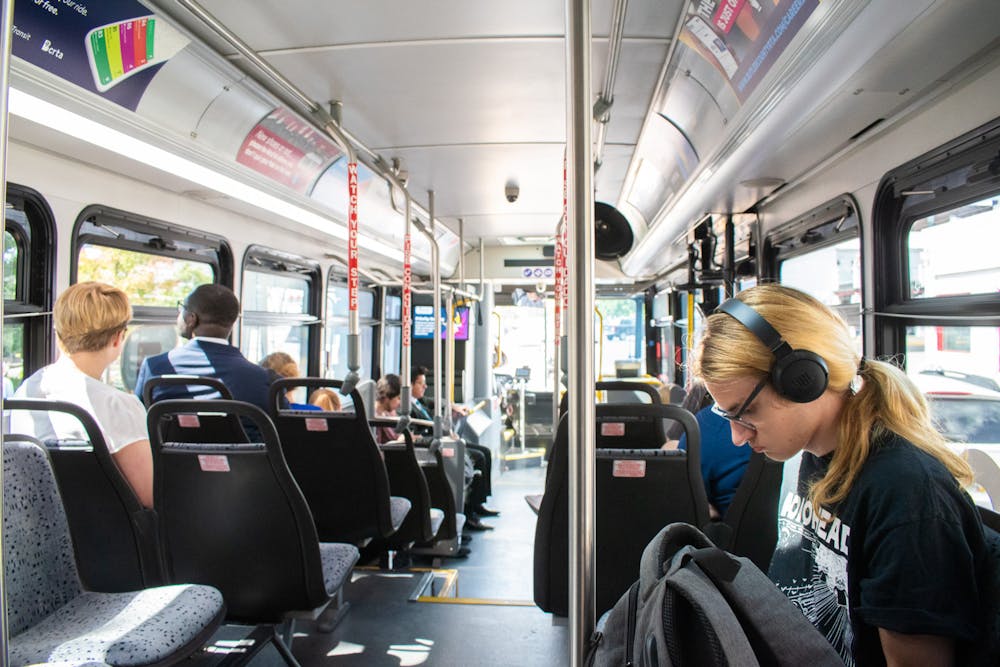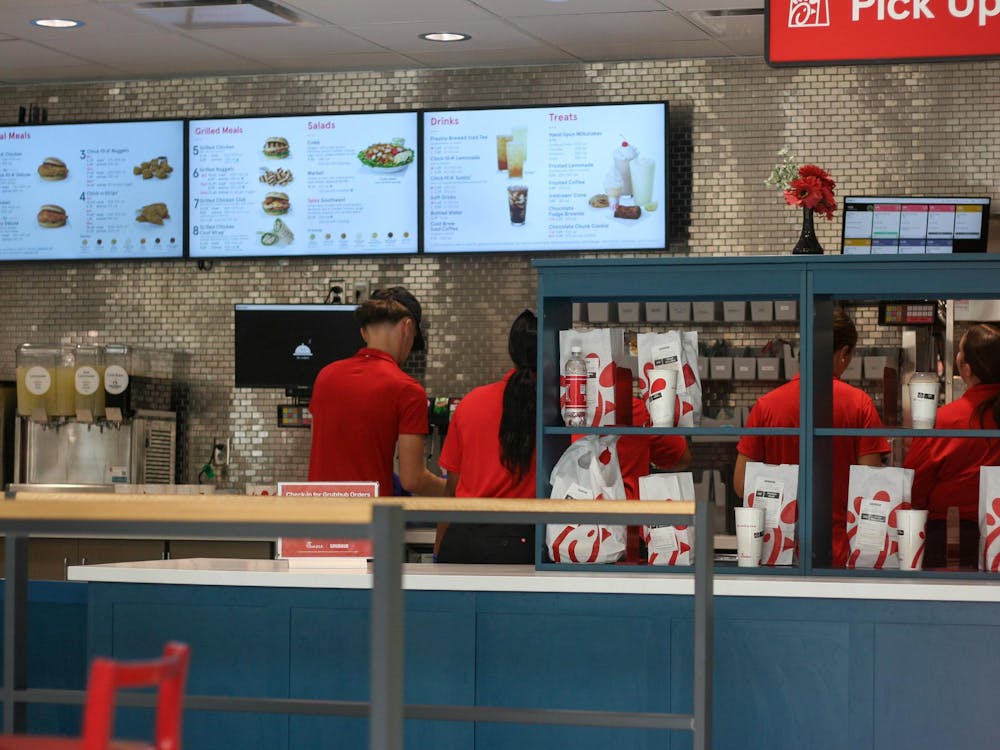As the planet continues to warm, some people look to change parts of their lifestyle to lower their carbon footprint. One way that has been promoted as a green lifestyle change is taking public transportation like buses, as they emit less greenhouse gas emissions than if all riders drove personal vehicles.
Addressing climate change is a top concern among young people, and it should be figured that a campus full of college students may use public transportation. Shawn Cowan, the director of customer care and public engagement at Butler Country Regional Transit Authority (BCRTA), said the routes in and around Miami University’s campus are designed for students.
Cowan shared that the total ridership during the first three weeks of the semester increased by almost 6,000 from 2023 to 2024. Abby Doane, a senior history and theater major is one of the thousands of students who utilize the bus system, especially since she moved off campus.
“It’s the most convenient way to get [to campus], and I also don't want to pay for parking,” Doane said.
Students have expressed frustration with Miami’s parking in the past, and it pairs with ease as a reason for taking a bus when living out of walking range from campus. But while students may choose to ride the bus for a variety of reasons, environmentalism remains a selling point for some. Chi Truong is a junior international studies major who takes the bus every day during the school week and likes that she is avoiding extra emissions.
“I do feel like every little bit helps, you know?” Truong said. “I mean, it’s good [if] we keep [transportation having] not too much pollution.”
While those who regularly use Oxford’s bus system may see the benefits, there is still a hurdle for some students stopping them from using public transit. The perceived complications with using a bus for the first time can stop students from riding.
Cowan said she believes that figuring out which route to take and alerting the driver to stop are the two biggest barriers. However, she also sees a quick learning curve for new users of the bus system.
“Once they get on once, they’re probably like ‘Okay, figured it out,’” Cowan said “It’s good, you know? But I think it’s the initial [hesitation stopping them].”
One way the BCRTA has combated confusion about using the bus system is the “BGo” app, which allows users to plan and track different bus routes. Cowan said the app has the highest use on Miami’s campus among all of BCRTA’s routes, and she believes using technology can help students understand the system.
This is true for sophomore primary education major Jordan Hatcher, who uses the app often to plan her bus rides. However, she still notices that students tend to hesitate to take the bus for the first time.
“I honestly feel like some people are embarrassed to ride the bus,” Hatcher said. “I don’t know if maybe it’s because they don’t understand how the app works, and it’s embarrassing to try and figure it out.”
Enjoy what you're reading?
Signup for our newsletter
Although students who ride the buses on campus have positive reviews, more than 3,000 students still bought a personal parking pass this semester. As a common personal method to reduce carbon emissions, and a campus full of young people, public transport could increase in popularity as it becomes promoted and normalized in the area.




